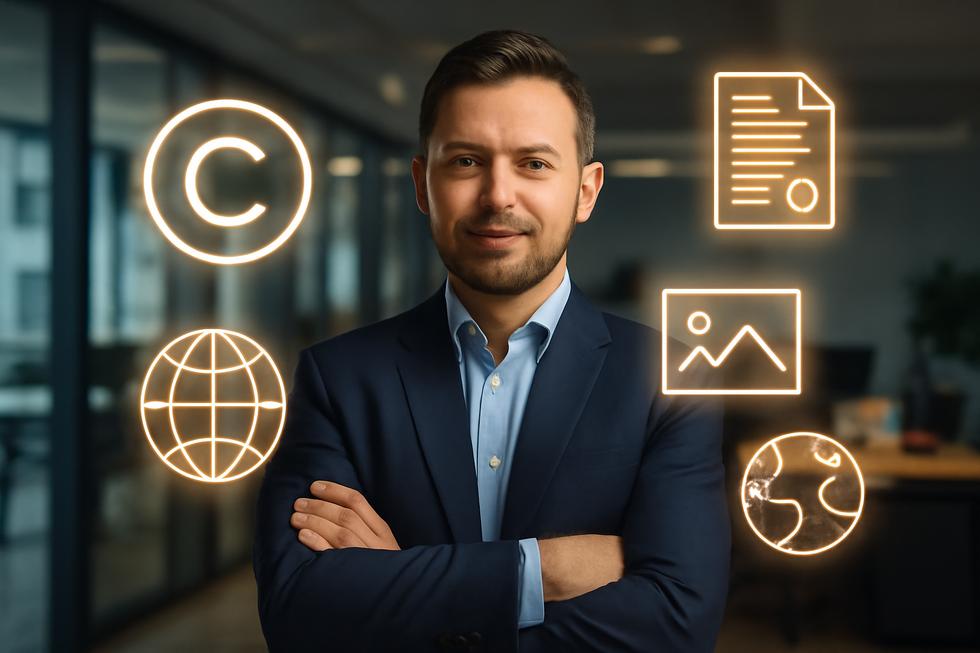Introduction
Protecting original creative works is a cornerstone of business success in today’s knowledge economy. Copyright grants exclusive legal rights that empower creators and businesses to control how their literary, artistic, musical, and other creative works are used. Understanding these rights enables business owners to safeguard intellectual property, deter infringement, and leverage content for competitive advantage. This guide outlines the fundamentals of copyright and its protections, clarifies the scope and qualifying criteria, highlights common limitations and exceptions, explains how duration and international treaties affect your rights, and discusses public domain and official registration’s role in securing your assets. Each chapter builds on the last to provide a structured, actionable understanding tailored specifically for business contexts.
Tables of Contents
Chapter 1: Fundamentals of Copyright or Copywrite: Legal Rights and Protections
- Understanding Originality and Fixation: Cornerstones of Copyright Protection
- Navigating Exclusive Rights: Understanding the Boundaries and Transferability of Copyright
- Navigating Copyright Duration and Its Essential Boundaries
- Navigating Enforcement Tactics and the Freedom of the Public Domain
Chapter 2: Criteria and Scope of Copyright or Copywrite Protection
- Navigating Originality and Fixation Challenges in Copyright’s Digital Transformation
- The Economic Influence of Exclusive Rights: How Copyright Shapes Creative Markets
- Navigating Territorial Boundaries and Global Harmony in Copyright Protection
- Societal Balance in Copyright Protection: Navigating Creators’ Rights and Public Access
Chapter 3: Navigating Limitations and Exceptions in Copyright Law: Balancing Rights and Access
- Technological Barriers and Legal Nuances: Anti-Circumvention Measures in Copyright Exceptions
- Economic Trade-offs in Copyright Exceptions: Balancing Creators’ Incentives with Public Access
- Global Dynamics of Copyright Exceptions: Balancing Sovereignty, Access, and International Norms
- Fair Use and Its Crucial Role in Access to Knowledge and Cultural Advancement
Chapter 4: Navigating the Complexities of Copyright Duration and International Variations
- Global Copyright Terms and Moral Rights: Navigating Duration Differences and Cross-Border Implications
- Bridging Borders: The Role of International Treaties in Aligning Copyright Duration and Enforcement
- Global Variations and Key Exceptions in Copyright Duration and Protection
- Balancing Time and Territory: The Complex Landscape of Copyright Duration and International Protection
Chapter 5: Navigating Copyright and Registration Amidst Public Domain Realities
- How Digital Advancements Shape Copyright, Public Domain, and Registration Dynamics
- The Economic Ripple Effect of Copyright and Public Domain in Creative Markets
- How Geopolitical Realities Shape Copyright Protection, Public Domain, and Registration Systems
- Navigating the Social Impact of Copyright, Public Domain, and Registration
Chapter 1: Fundamentals of Copyright or Copywrite: Legal Rights and Protections
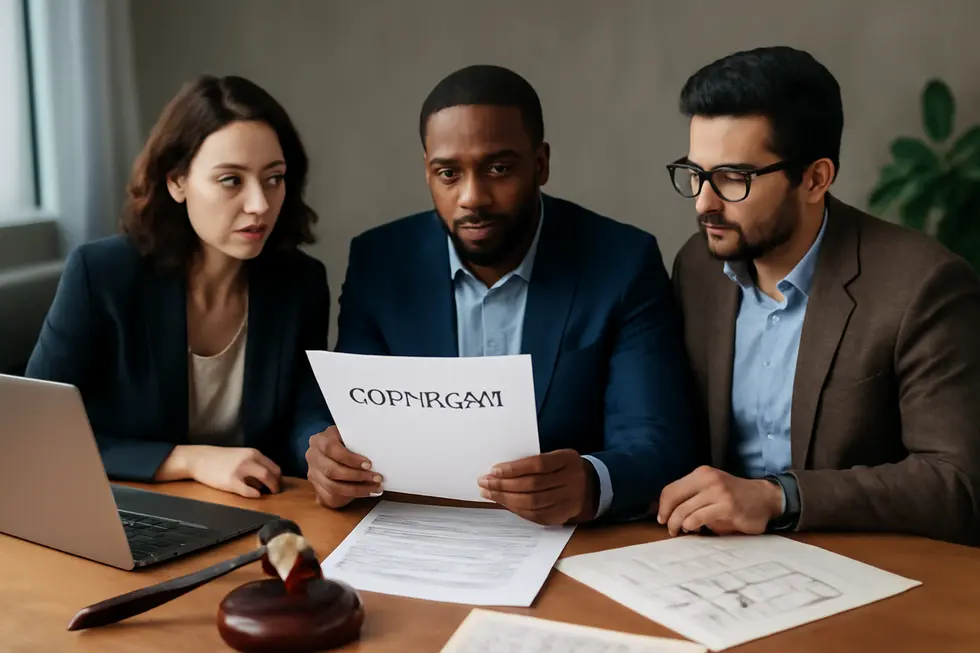
1. Understanding Originality and Fixation: Cornerstones of Copyright Protection
Originality and Fixation: Foundations of Copyright Law
Copyright hinges on two essential criteria: originality and fixation. Originality requires that a work be independently created and include at least a minimal amount of creativity. It’s important to note the creativity threshold is low—mere facts or simple listings without creative input, such as phone book white pages, do not qualify. However, originality does not demand novelty; if an author independently creates a similar work without copying, it can still be protected.
Fixation demands that the work be embodied in a tangible medium, stable enough to be perceived, reproduced, or communicated beyond a fleeting moment. This includes physical forms like writing and digital ones such as recordings or files. Fixation ensures that copyright protects actual expressions rather than ephemeral ideas or performances.
Both criteria must be met before copyright law applies. Cases like Kelly v. Chicago Park District illustrate fixation’s role in stabilizing creative works. For a deeper practical overview, see the copyright basics guide provided by the University of Michigan Library.
2. Navigating Exclusive Rights: Understanding the Boundaries and Transferability of Copyright
Copyright grants creators exclusive rights to control their original works, including reproducing, distributing, publicly performing, displaying, and creating derivative works. These rights empower copyright holders to manage how their creations are used and monetized. The scope of these protections extends to making copies, selling or sharing them publicly, performing works in public venues, and adapting original content into new forms. However, these rights are not without limits. Legal exceptions like fair use enable certain users to employ copyrighted works for purposes such as criticism, teaching, or research without permission. Additionally, copyright owners can transfer or license their rights fully or partially through agreements, with exclusive licenses granting sole usage rights to another party for specific contexts. Ownership changes only when the creator assigns the entire copyright, often retaining moral rights like attribution. Although copyright protection arises automatically upon fixation, registration is essential to enforce these rights legally. For a detailed overview of distribution rights within copyright, consult copyright distribution rights for businesses. More comprehensive legal guidance is available through resources such as the University of Portland’s copyright guide.
3. Navigating Copyright Duration and Its Essential Boundaries
Copyright protection is granted for limited periods, balancing creators’ rights with public interest. For works created after 1978, the duration generally lasts the life of the author plus 70 years, extending through the life of the last surviving author in multiple-author works. Corporate-owned creations or “works made for hire” have a term of either 95 years from publication or 120 years from creation, whichever expires sooner. This limited timeframe reflects constitutional intent to avoid perpetual rights and promote public access over time.
Copyright grants broad exclusive rights, yet these are subject to crucial legal limitations. Personal, non-commercial copying—for research or education—is generally permitted, as are backup copies of software. Authors may transfer or license their rights, and some moral rights, like attribution, may persist beyond economic protections. Once copyright expires, works enter the public domain, allowing unrestricted use.
Understanding these durations and exceptions ensures creators’ protections coexist with the public’s ability to engage with creative works fairly and legally. For deeper insight, see our guide on copyright law and the public domain.
For detailed U.S. copyright terms, refer to the Michigan Technological University copyright basics guide.
4. Navigating Enforcement Tactics and the Freedom of the Public Domain
Effective enforcement of copyright begins with establishing clear ownership, supported by evidence such as drafts or digital metadata. Creators must document infringement meticulously before initiating enforcement, often starting with cease and desist letters directed at the infringing party. When unauthorized use persists, especially online, the Digital Millennium Copyright Act (DMCA) offers a streamlined process through takedown notices to remove infringing content from websites or platforms. This law also protects service providers under safe harbor provisions when they act promptly, balancing rights between creators and intermediaries. Courts can further support enforcement by ordering internet service providers to block access to infringing materials once violation is confirmed.
Alongside enforcement, understanding public domain status is crucial. Works with expired copyrights or those never protected can be freely used without the need for permission or payment. However, users must remain aware of fair use exceptions, which courts assess case-by-case by examining factors like purpose of use, nature of the work, and market impact. Mastery of these enforcement tools and public domain principles ensures creators defend their rights effectively while respecting lawful access to cultural and intellectual resources. For further guidance on DMCA procedures, visit this detailed resource on handling DMCA takedown requests.
Chapter 2: Criteria and Scope of Copyright or Copywrite Protection
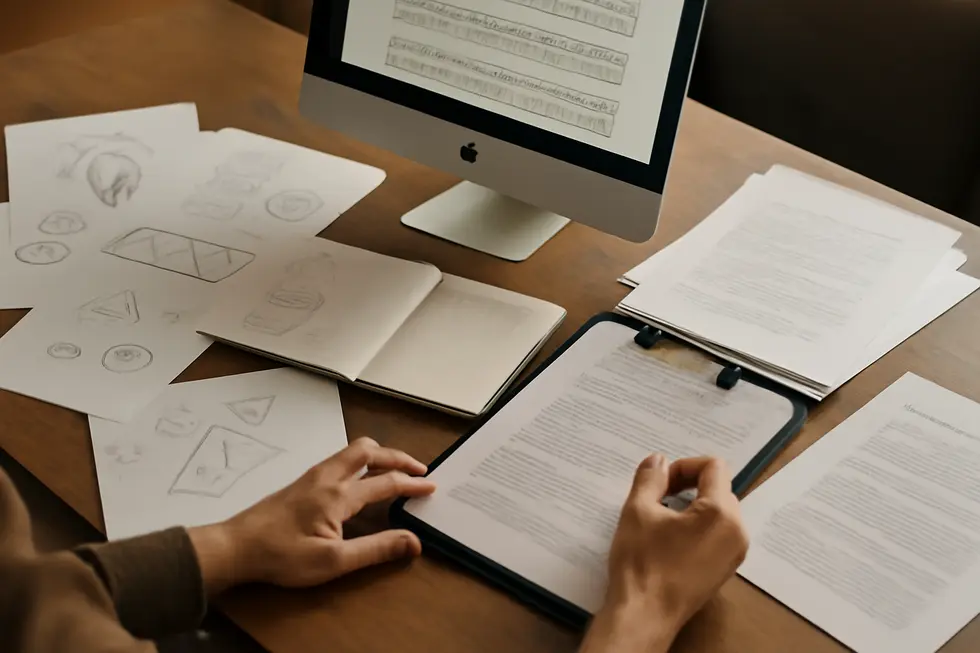
1. Navigating Originality and Fixation Challenges in Copyright’s Digital Transformation
The digital era profoundly reshapes the core copyright criteria of originality and fixation, challenging traditional legal frameworks. Originality still demands independent creation with some creativity, but digital tools enable swift replication and seamless modification, blurring the boundaries between original work and derivative copies. Fixation, requiring the work to be fixed in a tangible or digital medium, faces new complexity as digital files can be infinitely reproduced without degradation. Technologies like blockchain provide tamper-proof proof of authorship and timestamping, while digital watermarking assists in tracing unauthorized use, reinforcing protection despite rapid online dissemination. Additionally, the rise of AI-generated content further complicates authorship and fixation, prompting legal debates on rights and liability. These innovations force the legal system to adapt, balancing the protection of creators’ rights with the realities of digital reproduction and distribution. Understanding these technological impacts is essential for grasping how copyright criteria evolve today. For deeper context, see copyright information for books.
More on these challenges can be found at: https://www.ijllr.com/post/copyright-infringement-in-the-digital-age-an-analysis-of-the-issues-and-challenges-in-the-present-e
2. The Economic Influence of Exclusive Rights: How Copyright Shapes Creative Markets
Copyright protection grants creators exclusive rights to control reproduction, distribution, public performance, display, and derivative works of their original creations. These exclusive rights serve as powerful economic tools by enabling creators to monetize their work and attract investments in creativity and innovation. The control over use and distribution not only secures revenue streams but also ensures quality and integrity for consumers. Economically, industries protected by copyright generate significant sales and employment worldwide, underscoring the pivotal role copyright plays in broader economic growth. The exclusivity offered encourages continual development, allowing creators to maintain competitive advantages and recoup investments. Legal enforcement of these rights reduces unauthorized use and piracy, further safeguarding economic interests. Yet, copyright law balances this exclusivity with public interest through limitations like fair use, fostering a dynamic market where creativity and access coexist. For a deeper analysis of copyright’s economic role, explore this resource on copyright and economics and an informative video on market implications.
3. Navigating Territorial Boundaries and Global Harmony in Copyright Protection
Copyright protection operates at a unique crossroads where national sovereignty meets global collaboration. Rooted in the principle of territoriality, each country enforces copyright laws shaped by distinct legal traditions, economic priorities, and cultural values. This territorial nature means that rights and enforcement mechanisms vary widely, presenting challenges for creators aiming to protect or license works internationally. To bridge these differences, international treaties such as the Berne Convention work to harmonize fundamental aspects like protection duration and scope, fostering a baseline for global copyright standards. Yet, full harmonization remains elusive due to geopolitical interests, differing economic capacities, and evolving concerns around digital content and cross-border data flows. This dynamic interplay creates a copyright environment that is simultaneously local and interconnected, requiring rights holders to strategically navigate diverse laws. Understanding this geopolitical balance is critical to grasping the true criteria and scope that govern copyright protection today. For deeper insights into how copyright intersects with the public domain across jurisdictions, see copyright law and the public domain.
More information on international frameworks can be found through the Berne Convention details here.
4. Societal Balance in Copyright Protection: Navigating Creators’ Rights and Public Access
Societal Balance in Copyright Protection: Navigating Creators’ Rights and Public Access
Copyright law establishes a delicate equilibrium between rewarding creators and ensuring society’s access to knowledge and culture. By protecting the expression of ideas rather than the ideas themselves, copyright allows individuals to build upon facts and concepts freely while securing creators’ exclusive rights over their original works. This balance encourages innovation without granting monopolies over fundamental knowledge.
Protection arises automatically when a work is fixed in tangible form, removing barriers for creators of all sizes. However, copyright’s limited duration ensures that works eventually enter the public domain, enriching society’s collective cultural heritage. Legal exceptions like fair use facilitate educational, research, and critical uses without permission, maintaining open channels for cultural exchange.
Libraries and institutions leverage these provisions to expand digital and physical access, reinforcing public benefit. Ethical attitudes and societal values continuously shape copyright’s application, reflecting evolving norms about intellectual property and creativity. This dynamic framework supports both economic incentives for creators and the broader public interest, fostering a thriving creative ecosystem.
For further insights on balancing copyright with public access, see the detailed analysis at Trademark2Go’s discussion on copyright and the public domain.
Chapter 3: Navigating Limitations and Exceptions in Copyright Law: Balancing Rights and Access
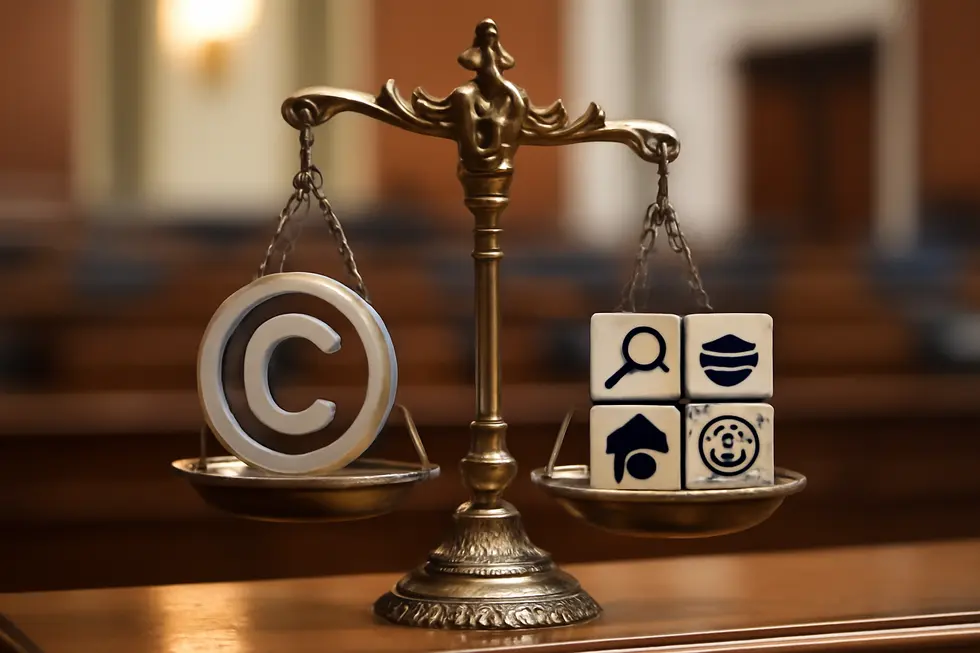
1. Technological Barriers and Legal Nuances: Anti-Circumvention Measures in Copyright Exceptions
Copyright law incorporates technological safeguards like anti-circumvention provisions and digital protection measures (TPMs) to prevent unauthorized access or copying of protected works. Under 17 U.S.C. § 1201, bypassing these digital locks is typically illegal—even when the intended use would fall under lawful exceptions like fair use or library privileges. This creates tension between protecting creators’ rights and allowing legitimate access to content. However, a carefully controlled exemption process permits specific circumventions every three years, enabling activities like encryption research or certain educational uses without violating the law. Moreover, the statute prohibits altering or removing copyright management information embedded in digital works, protecting metadata that identifies rights holders. While traditional copyright exceptions authorize some copying or use, they do not override TPM restrictions unless explicitly exempted. This framework underscores how technological measures shape and sometimes limit the practical application of legal exceptions, balancing innovation, access, and rights enforcement. For further legal detail, consult resources on current exemptions by the U.S. Copyright Office.
2. Economic Trade-offs in Copyright Exceptions: Balancing Creators’ Incentives with Public Access
Limitations and exceptions in copyright law play a pivotal role in harmonizing the economic interests of creators with those of the public. While copyright grants exclusive rights that incentivize creative investment, rigid enforcement might stifle innovation and restrict access to knowledge. Exceptions like fair use serve as essential safeguards, allowing educational, research, and transformative uses that enhance cultural development without severely undercutting creators’ revenues. This balance ensures markets remain both competitive and dynamic, enabling new innovations, particularly in technology sectors where overly strict rules can hamper startup growth and economic expansion. Furthermore, clear rules around exceptions reduce legal risks for content users such as influencers or brands, fostering sustainable creativity. These exceptions support a robust creative economy by preventing monopolistic control of cultural goods while preserving fair remuneration for authors. For deeper insight into balancing economic aspects of copyright for businesses and creators, see copyright definition economics for business.
3. Global Dynamics of Copyright Exceptions: Balancing Sovereignty, Access, and International Norms
Copyright limitations and exceptions operate within a complex global framework shaped by national interests and international standards. Countries navigate their economic and political priorities by adapting exceptions like fair use or fair dealing to fit domestic goals while adhering to treaties such as the Berne Convention and WIPO agreements. This balancing act affects how creators’ rights coexist with critical public interests, including education, research, and free access to information. The public domain plays a vital role here, enabling cultural exchange and innovation once copyrights expire. However, geopolitical factors influence the pace at which works enter the public domain and the scope of applicable exceptions, leading to varied access worldwide. Technological advances further complicate these dynamics, as data-driven economies push for protection of creative expression while promoting open access to factual content. Ultimately, the interplay of sovereignty, international law, and evolving technologies continuously reshapes the landscape of copyright limitations, ensuring a nuanced balance between protection and public benefit. For a deeper look at how public domain complements copyright law, see this resource.
For additional context on international frameworks, the World Intellectual Property Organization (WIPO) provides extensive analysis: https://www.wipo.int/about-ip/en/
4. Fair Use and Its Crucial Role in Access to Knowledge and Cultural Advancement
Limitations and exceptions, particularly the doctrine of fair use, are essential components of copyright law that balance creator protection with public interest. Fair use permits limited, unauthorized use of copyrighted works for purposes like education, commentary, research, and news reporting. This flexibility fosters innovation by enabling new creations built upon existing materials without needing prior permission, expanding access to knowledge across society.
Educational institutions benefit significantly, as fair use allows teachers and researchers to incorporate copyrighted content for learning and discovery, enhancing societal progress. Artists and creators also thrive by drawing inspiration from previous works, stimulating cultural evolution. However, fair use is carefully circumscribed to protect creators’ economic rights, with courts evaluating factors such as the purpose of use, amount taken, and market impact to avoid unfair exploitation.
By maintaining this delicate legal equilibrium, fair use supports both cultural growth and the economic sustainability of creative industries. For deeper insights into how copyright exceptions enable educational and creative practices, see the US Naval War College Copyright Fair Use Guide. Additionally, understanding copyright in the context of business owners can highlight how these principles extend beyond individual creators.
Chapter 4: Navigating the Complexities of Copyright Duration and International Variations
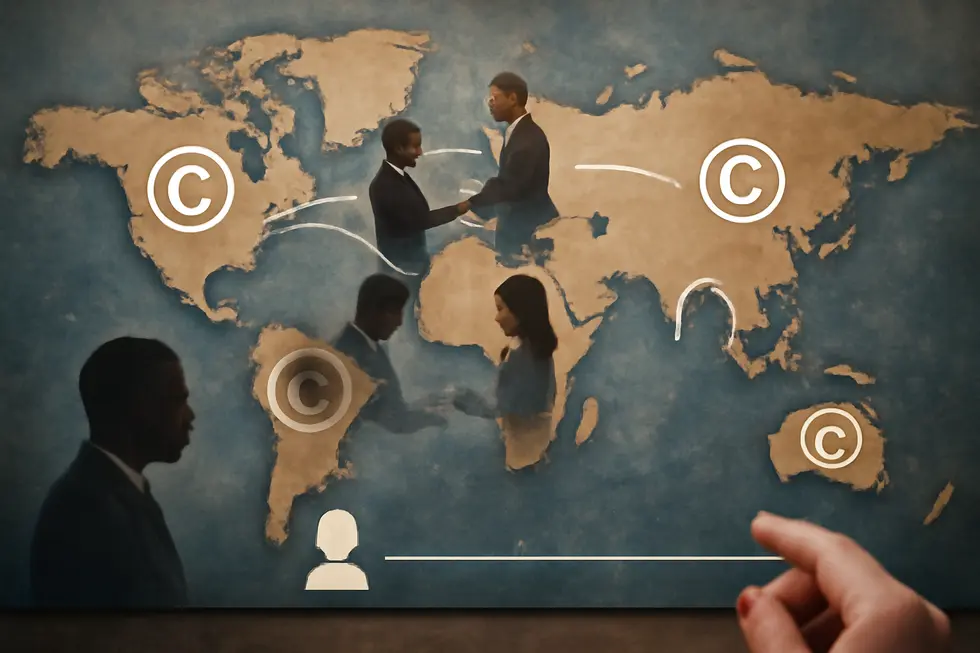
1. Global Copyright Terms and Moral Rights: Navigating Duration Differences and Cross-Border Implications
Global copyright duration varies widely, generally anchored to the author’s life plus 50 to 100 years, yet national laws create notable distinctions. For instance, Mexico’s copyright term extends up to life plus 100 years, with extensions applied only to works still protected at legal updates, preserving prior public domain status. Such discrepancies affect international rights enforcement, as works public domain in one country may remain protected elsewhere.
Moral rights further complicate matters. While European laws typically make these rights inalienable and perpetual, allowing authors control over integrity and attribution, countries like Canada and China apply different standards—China notably grants perpetual moral rights with retroactive effect. This diversity demands careful navigation for creators and users in cross-border licensing and infringement issues.
Emerging challenges, including AI-generated content and evolving IP strategies, underscore the need for adaptable international frameworks balancing creators’ protections and public access.
For further details on managing copyright terms globally, see the copyright law and public domain resource.
Source: University of Michigan – Rights of Copyright Holders
2. Bridging Borders: The Role of International Treaties in Aligning Copyright Duration and Enforcement
International treaties play a decisive role in harmonizing the duration and enforcement of copyright across diverse jurisdictions. The Berne Convention laid the groundwork by requiring member countries to grant protection to foreign works without formalities, setting a baseline of a minimum term—life of the author plus 50 years. Building on this, the TRIPS Agreement introduced stronger enforcement mechanisms and linked intellectual property compliance to international trade, compelling countries to provide equitable protections for domestic and foreign creators. Meanwhile, the WIPO Copyright Treaty modernized protections by addressing new challenges posed by the digital environment, including online rights management. Despite these frameworks facilitating more consistent cross-border copyright recognition and enforcement, significant variations persist due to differences in national laws and legal cultures. Harmonization efforts seek to ease rights management globally while respecting sovereign legal systems and cultural diversity. For deeper insights on copyright scopes and protection, see copyright distribution rights for business. Further details on treaty impacts are available at The Role of International Treaties in Cross-Border IP Enforcement.
3. Global Variations and Key Exceptions in Copyright Duration and Protection
Duration and Special Exceptions in Global Copyright Law
Copyright duration broadly aligns with the life of the author plus 70 years across many countries, reflecting standards set by international agreements like the Berne Convention. However, special provisions often modify this term, especially for anonymous works, corporate authorships, or works made for hire, which typically have fixed durations from publication or creation dates. Beyond duration, international copyright law faces complexity due to jurisdiction-specific exceptions. For instance, some nations carve out unique rules for employer-owned works, granting rights to organizations such as newspapers despite the creator’s authorship. Additionally, protections for traditional and folk music differ worldwide, balancing cultural preservation against exclusive ownership to encourage wider access. Enforcement varies as well; laws like the U.S. DMCA govern domestic online protections, while treaties establish basic rights globally but allow countries to tailor measures locally. Digital platforms and creators must navigate these overlapping rules, as divergent exceptions and legal interpretations shape an intricate environment. Ongoing international dialogues continue to refine these frameworks, including emerging debates about AI-generated content and cross-border enforcement challenges.
For further insight into how international copyright laws interact with U.S. regulations, particularly the DMCA, see PatentPC’s overview comparing international copyright laws and the DMCA.
4. Balancing Time and Territory: The Complex Landscape of Copyright Duration and International Protection
Copyright duration typically spans the life of the author plus 70 years, creating a framework that protects creators while eventually enriching the public domain. For anonymous works or those made for hire, protection lasts up to 95 years from publication or 120 years from creation, whichever is shorter. Historically, these terms were shorter and depended on formal registration, but international agreements like the Berne Convention have harmonized many aspects, though notable differences remain among countries. Technological advances, especially digital distribution, complicate enforcement across borders, demanding sophisticated tools like digital rights management and coordinated treaty efforts. Economically, extended terms incentivize investment in creative works but may delay broader public access, while socially, copyright must carefully balance protecting authors’ rights against promoting cultural exchange and knowledge sharing. Cross-border enforcement benefits from agreements like the Paris Convention, which helps safeguard priority claims and combats bad-faith filings worldwide. This intricate interplay of time limits and territorial reach underscores copyright’s evolving role in a connected, digital era. For more on copyright duration nuances, visit the U.S. Copyright Office.
Chapter 5: Navigating Copyright and Registration Amidst Public Domain Realities
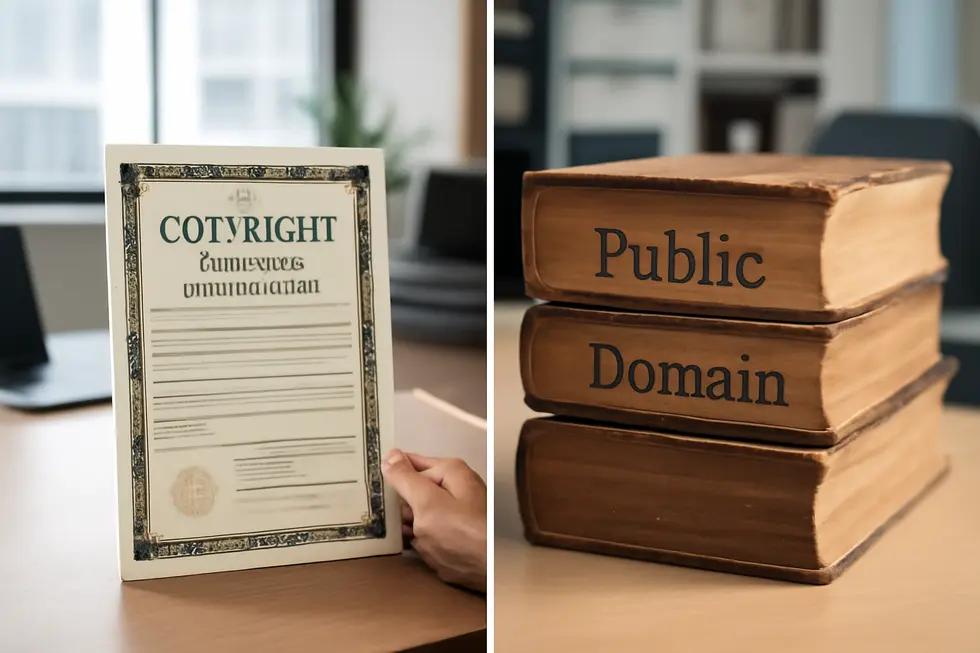
1. How Digital Advancements Shape Copyright, Public Domain, and Registration Dynamics
Digital technology has profoundly altered how copyright interacts with public domain and registration. The ease of copying and distributing content online raises persistent concerns over unauthorized use, especially when works have not entered the public domain. Digitization enables widespread access but also challenges copyright enforcement, as unauthorized reproductions proliferate rapidly. Meanwhile, artificial intelligence complicates copyright further: AI systems often learn from copyrighted material, generating outputs whose ownership remains legally uncertain. Simultaneously, digital tools streamline registration processes, offering creators quicker, more efficient ways to establish and track their rights through online platforms and metadata management. Public domain materials benefit from technological progress too; digital libraries and open educational resources expand their accessibility globally, encouraging reuse without legal barriers. However, accurately identifying whether a work belongs to the public domain remains complicated and critical to avoid accidental infringements. Balancing these factors, technology both empowers and challenges copyright’s protective role, reshaping how creators, users, and the public engage with intellectual property. For a deeper exploration of copyright in public domain contexts, see copyright law and public domain insights.
External reference: University of Cincinnati guide on copyright basics and public domain.
2. The Economic Ripple Effect of Copyright and Public Domain in Creative Markets
Copyright serves as a critical economic engine by granting creators exclusive control to monetize and protect their original works. This exclusivity incentivizes investment in arts, literature, music, software, and other creative fields, underpinning industries that generate trillions annually and significant export revenue. Creators rely on legal protections to license, sell, and regulate how their work circulates, ensuring sustained financial rewards. Yet, this system is balanced by the public domain, which unlocks works for unrestricted use once copyright expires or is waived. Access to public domain content reduces production costs, stimulates innovation across education, media, and technology, and enriches cultural development by allowing derivative works without legal barriers. However, prolonged copyright terms can delay this transition, limiting cultural access and posing challenges for educators and smaller creators. The interplay of copyright registration and public domain fosters a dynamic creative economy, promoting both safeguarded innovation and open cultural exchange. For further understanding of the economic significance, see this detailed analysis on copyright information for books and insights from external research on public domain economic impacts.
3. How Geopolitical Realities Shape Copyright Protection, Public Domain, and Registration Systems
Copyright protection varies widely across nations due to geopolitical factors impacting laws, enforcement, and public domain scope. While international treaties like the Berne Convention aim to harmonize standards, countries maintain unique rules on copyright duration, rights granted, and registration requirements reflecting local priorities and cultural values. This results in differing timelines for when works enter the public domain, complicating cross-border use and licensing. Some nations rely heavily on formal registration to enforce rights and access remedies, whereas others grant automatic protection upon creation, challenging multinational rights management. The rise of digital technologies and AI intensifies these geopolitical tensions, as economic powers balance intellectual property safeguards with open knowledge sharing essential for innovation. Navigating this complexity demands understanding diverse legal regimes and their impact on creators’ control and public access, especially regarding which works are protected or free for use. For deeper insights on related public domain issues, see copyright law and public domain. Further detailed analysis of international influences can be found through resources on the Berne Convention.
4. Navigating the Social Impact of Copyright, Public Domain, and Registration
Copyright law plays a crucial societal role by striking a balance between protecting creators’ exclusive rights and fostering cultural progress through the public domain. Creators receive automatic copyright protection upon fixation of their original works, allowing them to control and benefit economically from their creations. While registration is not mandatory, it serves as an important tool for documenting ownership and facilitating enforcement in disputes. Meanwhile, works enter the public domain once protection expires or never qualify for copyright, enabling unrestricted public use. This openness fuels innovation, education, and cultural transmission by allowing anyone to build on existing knowledge and creative material. As copyright frameworks evolve alongside emerging technologies, such as artificial intelligence, society continues to negotiate this delicate trade-off—motivating creation while preserving a shared cultural commons that supports ongoing creativity and access. For further insights on how copyright intersects with public domain principles, visit copyright law and public domain. External analysis from Upworthy elaborates on these societal dynamics, emphasizing copyright’s role in cultural sustainability.
Final thoughts
Copyright serves as a fundamental legal shield for business owners to protect their original creative works, driving both competitive strength and monetization. By mastering the basics of copyright rights, understanding qualifying criteria, navigating exceptions, appreciating protection duration, and leveraging registration benefits, business leaders can unlock the full potential of their intellectual property portfolio. Clarity in these areas reduces legal risks, maximizes asset value, and ensures continued innovation without fear of unauthorized exploitation. Staying informed and proactive about copyright protections enables businesses to maintain control over their unique creations and secure success in an increasingly creative and competitive marketplace.
Your IP is the foundation of your success – let’s protect it together before it’s too late. We can’t wait to help you turn your ideas into legally secured assets.
About us
undefined
